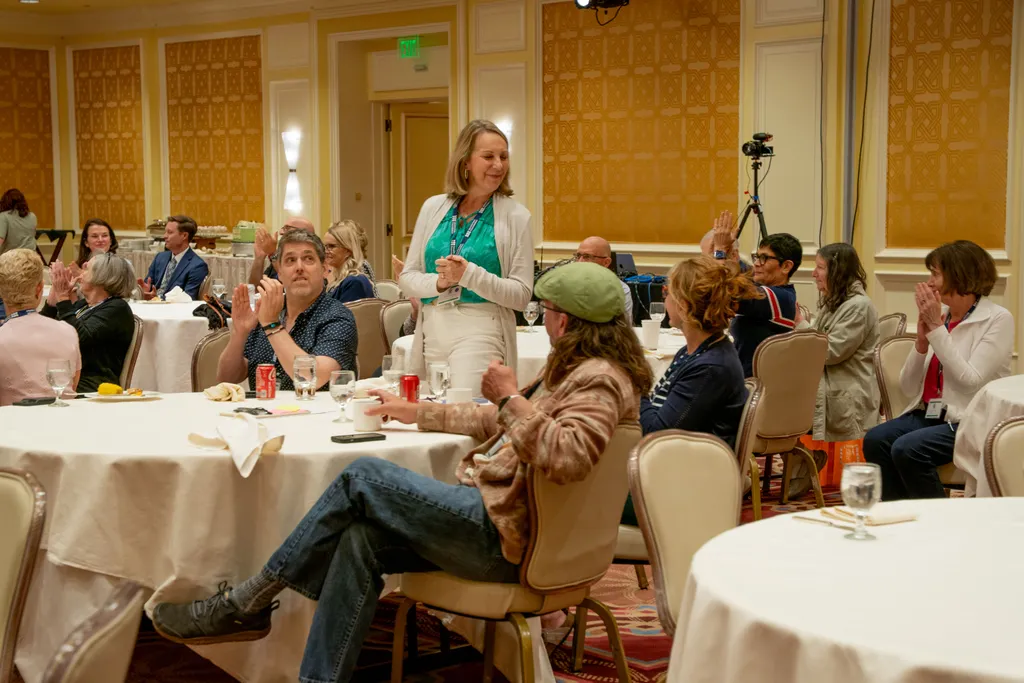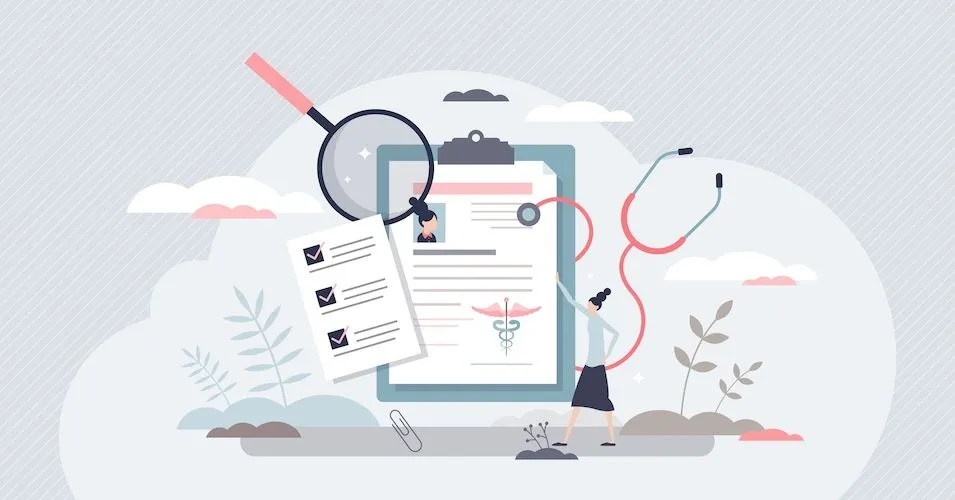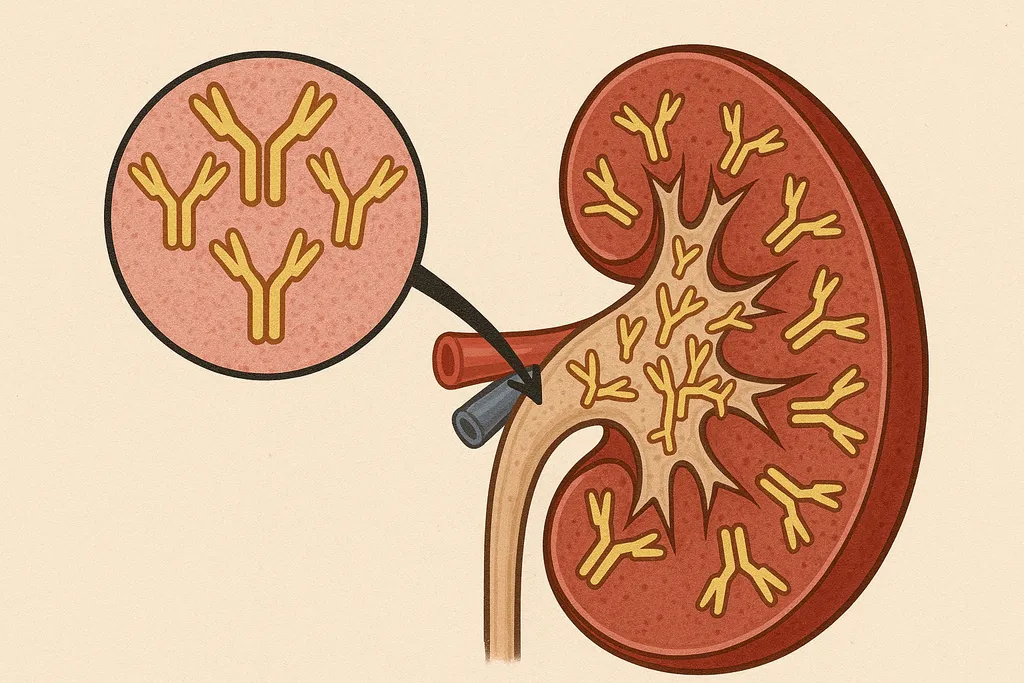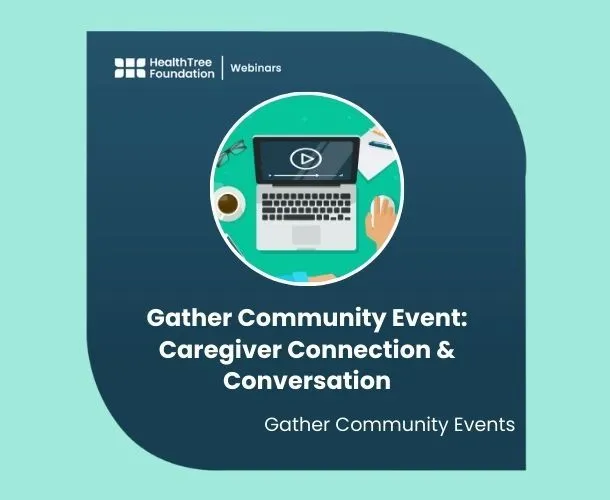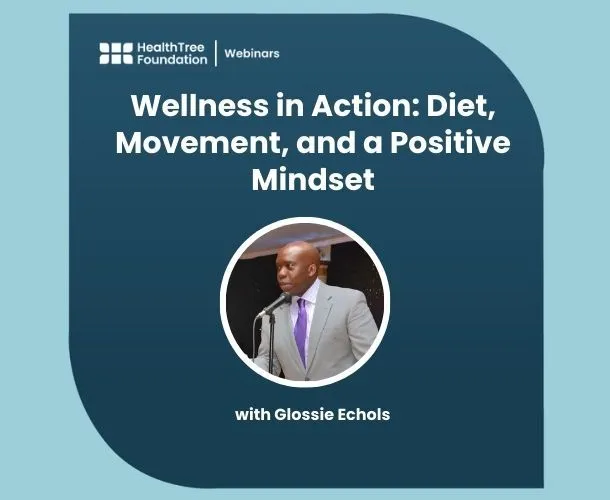MCRT Webcast: Understanding Myeloma Stem Cell Transplantation

Autologous stem cell transplant (ASCT) is an essential part of many myeloma patients' treatment strategies. Among the first questions physicians answer in the early stages of a myeloma diagnosis is whether patients are transplant eligible or ineligible. Once considered controversial, ASCTs are now largely considered to be routine, safe, and essential to achieve deep remissions. Second and tandem transplants are more prevalent. Allogeneic transplants continue to be rare. In the age of novel therapies, many patients speculate if ASCTs are even needed, some still fear them. But the consensus of current practice still place transplant near the top of the list of effective treatments.
Drs. Natalie Callander, Mark Schroeder and Sergio Giralt address these and other issues concerning stem cell transplantation. Dr. Zachary Crees leads a discussion about two case studies and all our engage in answering questions from viewers of the first session of the Myeloma Crowd Round Table interactive webcast held on October 31, 2020:
Natalie Callander, MD, University of Wisconsin, Madison, WI: Why Consider Bone Marrow Transplant?
- Statistical evidence suggests the incidence of myeloma is increasing, with unexplained differences in different types of populations
- Autologous stem cell transplant (ASCT or auto) is a procedure using one’s own cells
- Allogeneic stem cell transplant (allo) using a donor’s cells are done infrequently in myeloma
- ASCT first was used because of lack of other treatments available
- Combining chemotherapy with ASCT was shown to give significantly better response rates in 1996 study, better quality of life after recovery
- More ASCTs are done in myeloma than in any other cancer type
- Transplant is never front line treatment
- Combination therapies have high response rate at front line
- Most ASCTs in US are done as an initial “package” of treatment
- Fitness matters more than age to determine ASCT eligibility
- Apheresis, the harvesting of stem cells, often takes place after two cycles of treatment; mobilization strategy to increase number of stem cells to harvest enough for at least two ASCT procedures
- Advantages of ASCT
- “One time” therapy, effective, repeatable, potential time off from drug therapy, low dose maintenance
- Disadvantages of ASCT
- Toxicity, hospital/clinic confinement, time needed to recover, potential long term side effects (rarer)
- Studies have shown ASCT plus other treatments control myeloma better and enhance survival
- Seems to be better minimal residual disease (MRD) results with transplant
- Tandem transplants
- Study showed a number of patients had a better response after second transplant, particularly those with high-risk disease
- Overall survival results still inclusive
- Maintenance seems to be helpful
- Long term data suggest allo has no survival advantage
- Largely a research question for clinical trials
- Will transplants become obsolete?
- Studies comparing long term carfizomib (Kyprolis ®)-based combinations vs. ASCT
- Those with transplant had better MRD responses with lower rates of early relapse
- Will transplants still be used in 20 years?
- Immunotherapies moved to front-line offer most promising possibilities
Mark Schroeder, MD, Siteman Cancer Center, Washington University, St. Louis, MO: The Process of ASCT
- The phases of myeloma therapy: induction, consolidation and maintenance
- Focus of this presentation is for patients who are transplant-eligible
- Induction: treatment to get control of the disease prior to thinking about high-dose chemotherapy and stem cell transplant
- Consolidation: response is assessed, decisions are made about whether or not to transplant and, if yes, the need for a second transplant
- Maintenance: using drug treatments to maximize response, usually less intense than initial treatment and consolidation
- ASCT procedure
- Goals are to maximize cytoreduction of tumor, rescue from high dose chemotherapy, reset immune response to cancer
- Collect enough stem cells to allow for adequate blood count recovery after chemotherapy
- Use of growth factors (G-CSF) to help body produce more blood cells
- Blood cells are collected by apheresis (can be stored for years)
- After cells are collected, a dose of chemotherapy is administered, typically melphalan
- One time infusion damages myeloma and blood-producing stem cells
- Typical side effect profile of ASCT
- Nausea, fatigue, diarrhea typically last 1-4 days
- Slight fever
- Once neutrophils recover, side effects lessen
- Why put patients through these toxicities?
- Study has found ASCT results in longer time until myeloma progresses, which is called progression-free survival (PFS)
- Management after ASCT depends on risk assessment, comparing response before and after ASCT
- Need for possible second transplant is assessed during consolidation
- High-risk patients who had ASCT and prolonged maintenance had longer PFS
- Both standard- and high-risk patients had longer PFS with extended lenalidomide maintenance
- Addition of proteasome inhibitors (PIs) also helps with PFS
- Monitoring and measuring effectiveness
- Regularly scheduled blood and urine tests, bone marrow biopsies, imaging are conducted [learn more about imaging here]
- Minimal residual disease testing (MRD) [learn more about MRD here]
- Response is measured by how much myeloma is reduced
Sergio Giralt, MD, Memorial Sloan-Kettering Cancer Center, New York, NY: Research Finding about Need and Effectiveness of ASCT
- Transplant is a choice, it is not a necessity, but for most myeloma patients, it may be the single most effective way to get long-term disease control
- Although no overall survival (OS) benefit has bee proven, patients with high-risk disease have significant OS benefits
- High-dose melphalan shows PFS benefit, patients have a deeper response as measured by MRD
- Study has shown that patients who chose not to have transplant after induction has a doubling of risk of relapse
- Will transplant become obsolete is a misleading question
- ASCT is not a treatment for myeloma, high dose melphalan is, ASCT can rescue bone marrow from its effects
- Melphalan can kill myeloma cells resistant to chemotherapy
- MRD-negative is not a surrogate for cure, but the less myeloma one has, the better it is
- Although aggregate numbers of ASCTs in myeloma have plateaued, likely because of the perception of benefit from novel drug combinations, only 50% of patients who “should” get ASCT actually do
- Significant discrepancy in Black myeloma community
- Pros of early transplant
- Youngest, healthiest you will be, myeloma will be less resistant, quickest return to “new normal”
- Pros of delaying transplant
- Conserve quality of life in early disease, minimize lifestyle disruption, hedge bets against future relapse
- Cons of early transplant
- 25% of patients may not need it, 20% relapse within 2 years, 1% risk of serious complications, takes three months to recover, no OS yet proven
- Cons of delaying transplant
- Two-thirds of patients will need it within two years, 20% of patients will become unable to have transplant because they become too sick or have not collected stem cells, recovery will be more difficult
- Supportive care and new research strategies
- Choose program carefully: outpatient or inpatient?
- Anticipate side effects to prevent and treat
- Most side effects happen when white blood cell count is zero, the cytokine interluken-6 (IL-6) is at its highest level then, perhaps blocking IL-6 will lessen side effects with use of siltuximab
- Acupuncture has been shown shown to reduce symptom burden
- Melphalan dosing depends on individual tolerability
- PK-directed melphalan helps determine optimal exposure
- The quicker the immune system recovers after transplant, the less likelihood of relapse
- Melflufen, a new melphalan-related drug has promising results
Zachary Crees, MD, Siteman Cancer Center, Washington University, St. Louis, MO: Discussion of Two Case Studies with Full Faculty
Case Study One
- 62 year old female with osteoporosis who had 5 months of back pain
- Initially sought care from chiropractor and then orthopedist who gave her steroid injections that provided no relief
- Primary care physician ordered MRI which showed compression fractures in the vertebrae, bone biopsy showed 60% plasma cells, following other tests, she was diagnosed with stage I myeloma, standard-risk
- Dr. Callander would choose VRd for induction, which is what patient received, achieving a partial remission (PR)
- Dr. Schroeder recommended to collect stem cells after 5 rounds of induction and moving on to stem cell transplant, patient did go on to get ASCT
- Dr. Giralt noted the standard of care in the US was lenalidomide/Revlimid ®-based maintenance until progression, if MRD- was achieved, an option would be to stop maintenance, but since she failed to achieve complete remission (CR), he would recommend len-based maintenance
- The patient was on a clinical trial comparing Rd to Dara-Rd followed by transplant and MRD assessment
- Dr. Crees asked faculty how they use MRD assessments to make treatment decisions
- Dr. Callander noted the MRD is still a research question
- Dr. Giralt agreed, but with one exception: for patients who have insignificant side effects with lenalidomide and want to come off maintenance, MRD- status helps inform decision, MRD+ patients would stay on maintenance
- Dr. Schroeder agreed MRD was a research question but would have encouraged any of his patients to enroll in this clinical trial
Case Study Two
- 62 year old male with hypertension, sleep apnea, treated thyroid cancer had symptoms of weakness and jaw numbness
- Patient had CT, then brain MRI which show marrow issues, had a bone marrow biopsy that determined “increased plasma cells”
- Was diagnosed with Stage III myeloma
- Induction of KRd was complicated by rash, switched to Kd with cyclophosphamide and continued to have persistent high-risk disease
- Dr. Callander noted many doctors would consider a CD 38 inhibitor a like daratumumab or isatuximab combination therapy with pomalidomide
- Dr. Giralt noted, with historical experience, the patient could have stem cells harvested, be treated with high dose melphalan, ASCT, and a maintenance trial for high-risk disease, but anti-CD 38 monoclonal antibodies are good option
- Dr. Schroeder, since this is a high-risk patient, using a CD 38 targeted agent prior to ASCT was a good option
- Patient was actually treated with Dara-Vd and continued to have persistent disease
- Patient was switched to DCEP (dexamethasone, cyclophosphamide, etoposide, cisplatin) and achieved partial response, before having ASCT which led to a very good partial response (VGPR)
- Maintenance was Dara-Pd and patient relapsed within six months of ASCT
- How would faculty manage this high-risk disease case further using International Staging System?
- Patient would qualify for a number of high-risk clinical trials and likely be offered an anti-BCMA CAR T cell therapy
- If patient were young and fit, he might qualify for an allogeneic SCT trial with BCMA-targeted strategy
- Clinical trials for antibody are also available
- If patient chose not to do trial, another option would be newly approved drug Blenrep ® [more information about this drug treatment can be found here]
Audience Questions & Answers
- 0:44 - What is the average remission time after ASCT?
- 2:59 - How long of a response is sufficient to consider a second transplant (unplanned and tandem)?
- 5:15 - When it the right time to collect stem cells?
- 7:51 - How much genetic profiling can or should be done to determine the impact of transplant or tandem transplant or other strategies?
- 11:29 - What comorbidities are of most concern to you when you think about ASCT?
- 15:46 - What is the percentage of benefit for a high-risk patient to do a single versus tandem ASCT?
- 19:10 - If initial induction (VRd) was not that successful (patient is now on daratumuab/DARZALEX ® and carfilzomib/Kyprolis ®), is that patient still eligible for ASCT? So one keep treating before going to ASCT?
- 22:30 - If transplant is being used to reduce tumor burden, and is not optimal effective, should patients consider following up with CAR T cell therapy?
- 25:56 - If someone is diagnosed early with no bone tumors and with amyloidosis, how do you treat amyloidosis with respect to stem cell transplant (for myeloma diagnosis)?
- 27:35 - (Re: a high-risk patient with t(4;14) in the UK) Should this kind of patient be thinking about a dual maintenance therapy, for example an IMiD plus proteasome inhibitor (PI)?
- 29:48 - If one does well on induction therapy and in remission, why should ASCT still be considered?
- 31:05 - VRd seems to be most commonly used in induction? When should one consider carfilzomib/Kyprolis ®? Are there genetic reasons for doing so?
- 33:05 - What factors to you consider to determine when to have a second transplant as compared to using other drug combination therapies?
- 33:55 - What is the recommendations on vaccines for childhood diseases, post-transplant?
- 35:28 - Does the information you are talking about also apply for plasma cell leukemia (PCL), primary or secondary?
- 38:23 - Is melflufen it designed to replace transplant?
- 39:50 - What are the considerations about transplant if one has extra medullary disease?
- 41:35 - A patient who is using valacyclovir post-transplant has been told by the physician that it can potentially affect renal function. How long should this and other supporting medications be taken post-transplant?
- 44:30 - How has COVID-19 affected your practice?
- 48:18 - Some treatments have the risk of secondary cancers, are there any increased risks in ASCT?
- 49:40 - In what context could a smoldering myeloma (SMM) patient consider an ASCT?
Questions Answered in Chat Forum
General
- My father was just diagnosed with multiple myeloma, so I’m not really sure what questions to ask. Anything would be helpful.
Dr. Crees answered: I am sure you have many questions. Consider scheduling a consultation with a myeloma specialist in your area. This will give you the best chance to have your questions answered in a way that is specific to your family member's case. [You can find a directory of myeloma specialists here.]
- Is stem cell transplant synonymous with bone marrow transplant? If not what are the differences?
Dr. Giralt answered: The blood stem cell lives in the marrow. When obtain it from the marrow we call it a bone marrow transplant. When we mobilize the stem cell from the marrow to the blood we call it a blood stem cell transplant.
- Will insurance cover the harvesting of stem cells for ASCT? [related question] Do Insurance companies accept this treatment for reimbursement. How expensive is it?
Dr. Giralt answered: Most insurance will cover it. [2nd question answer:] Most insurance and Medicare cover the expenses of transplant and other myeloma treatment, but out-of-pocket expenses vary.
- How is ultra high-risk disease defined as compared to high-risk disease?
Dr. Schroeder answered: In the slide I showed, high-risk meant one had one high risk feature and ultra high risk meant that one had two or more of the high-risk features. This is based primarily on genetic changes.
Dr. Crees answered: Two of the most commonly used risk scores are the revised international staging system (R-ISS) and a cytogenetics-based scoring system.
- What is the difference between refractory and relapsed disease?
Dr. Crees answered: Refractory disease means that a patient’s myeloma is not responding to treatment and they have not achieved a response. Relapsed disease means they initially did achieve a response but eventually the myeloma came back.
Candidate for Transplant?
- Can someone please clarify who is or isn’t a candidate for a stem cell transplant?
Dr. Crees answered: There are no absolute criteria that completely eliminate one’s eligibility for transplant. However, there are many factors that influence the risk of transplant. These factors need to be weighed against the benefit of transplant. A thorough discussion with your myeloma physician will help to clarify if transplant is right for you.
Preparing for Transplant
- Are you able to separate and remove stem cells from cancer cells when collecting them before transplanting them back these myeloma patients?
Dr. Giralt answered: Not at this time. The best way to collect a "clean" product is to get a very effective induction.
Dr. Crees answered: Some studies have looked at trying to “remove” contaminating myeloma cells from the transplant product but is doesn’t yet appear to have shown any significant differences in patients outcomes after transplant.
- Does anything happen to the stem cells harvested via apheresis to remove the cancer cells?
Dr. Crees answered: This is a great question. Several studies have evaluated the benefit in trying to remove meyloma cells from the stem cell product that is harvested. However, these studies have not shown a significant difference in outcomes, so it is not routinely done. Currently, the most effective way to reduce the number of contaminating myeloma cells in the product is to get the best response possible with induction therapy.
- Does depth of response post induction affect depth of response post ASCT, which in turn correlates with duration of remission? Therefore should a patient cycles of induction until they plateau?
Dr. Giralt answered: This is an important question. Most of us would recommend 4-6 cycles pre-transplant and tailor the post transplant treatment to the depth of response obtained.
- Dr. Schroeder mentioned that the tumor burden should constantly go down from the time of induction therapy to ASCT. What could it mean if this trend is not constant Does it have an effect on the transplantation?
Dr. Crees answered: It does occur that patients experience a rise in their M-protein during their treatment break between induction and proceeding to auto-transplant. The decision to proceed with auto-transplant vs to pursue alternative treatment regimens should be based on a conversation with your myeloma specialist.
- Can you highlight what alternative conditioning regimens are being studied to potentially replace high dose melphalan?
Dr. Giralt answered: A drug called melflufen and combinations of melphalan with busulphan.
- Is melphalan resistance a frequent occurrence in the stem cell transplant context? Is it known, or can it be known, in advance of transplant? Or is it only known after the fact, by lack of or limited response to transplant?
Dr. Crees answered: There are not any specific FDA approved tests that predict response to melphalan. However, patients with refractory disease to multiple induction regimens and who go into auto-transplant with active disease, there is an increased risk of relapse after transplant. This likely speaks to the aggressive nature of the individuals myeloma, rather than “melpahlan resistance” per se.
Post-Transplant
- How long after transplant, does one go back on meds to keep disease in remission?
Dr. Schroeder answered: Typically this therapy is started around 100 days after transplant.
- Can one’s type of myeloma or classification change after a transplant?
Dr. Crees answered: There is a growing appreciation for a concept called “clonal evolution” in myeloma cells as people go through various lines of treatment. It is thought that the myeloma can change over time with the selective pressure of different treatments.
- After transplant are patients more susceptible to catching viruses or other germs? If so, how long will they be more susceptible?
Dr. Crees answered: Yes, patients who have recently undergone ASCT are at increased risk for infections and should take precautions to reduce their risk of infection. Individual risks vary from patient to patient, and the exact timeline that one may be at high risk is variable and would be best discussed with the individual’s physician.
- Can stem cells be harvested after transplant?
Dr. Giralt answered: Yes.
- If a patient is MRD-negative after ASCT, why not collect stem cells for second transplant at that stage?
Dr. Crees answered: Currently, this is not clear. Data that suggests that lowering the amount of myeloma cells in the stem cell product actually leads to changes in outcomes after auto-transplant. Some studies have looked at ways to eliminate contaminating myeloma cells from the product, and have been very effective at eliminating the myloma cells, but these studies have not led to improved patient outcomes. It is likely that many patients with MRD-negativity after ASCT still have myeloma disease. We just can’t detect it.
- Can you provide an example between a good response, a complete response and a failure following a transplant.
Dr. Crees answered: We define partial response, very good partial response and complete response based on the International Myeloma Working Group response criteria.
- Can one it have light chains in the blood test three months after transplant and still have a successful result?
Dr. Crees answered: The presence of light chains may be due to many causes (only one of which could be myeloma). Discussion with your myeloma physician may help clarify if yours is due to myeloma, but even if it is, very effective treatments exist.
- What is the name of the drug you mentioned that can minimize side effects after a SCT, is it available in U.S. or Canada?
Dr. Giralt answered: Siltuximab is available but not approved for transplant.
Post-Transplant Vaccines and Immunity Issues
- Once one has had a transplant does does one lose immunity to prior diseases?
Dr. Giralt answered: We revaccinate patients regularly because we can’t guarantee that prior immunity is maintained.
- I am very concerned about whether I will need to be revaccinated.
Dr. Giralt answered: Most transplant centers would recommend you be revaccinated to make sure you don’t get hepatitis, measles, or tetanus.
- Virtually everybody will relapse at some time, Even if the M protein cannot be measured. That means either the tumor cells were reintroduced when you received your stem cells back or all the treatments did not succeed is killing of all tumor cells. Which one is the explanation?
Dr. Giralt answered: We generally don’t eliminate the last myeloma cell in the body and those myeloma cells learn how to escape your immune system.
Third Transplant?
- Would a third transplant some years after a tandem transplant be of any benefit? Or have third ones been found to be of little use?
Dr. Giralt answered: Yes, these have been performed and can be helpful.
- When would you recommend a third ASCT, to treat second relapse?
Dr. Crees answered: Fortunately, there are many treatment options for patients with multiple relapses. The discussion about when to pursue a third transplant compared to other treatment regimens including clinical trials is patient specific and should be based on a discussion with your physician.
- When might it be appropriate for a patient to receive a second ASCT after 5 or 10 years post ASCT? Assuming 3 or more relapses.
Dr. Crees answered: In patients who experienced benefit from their first auto-transplant and who relapse >18-24 months after their transplant, there is a reasonable chance they can benefit from a second transplant. Specific considerations really depend on what lines of therapy one has had, how long they benefitted from those other options, what options are left, what is the patient’s performance status, etc.
Allogeneic Transplants
- Are there any studies that demonstrate the effective a stem cell transplant from a healthy sibling or can the cells only be harvested from the patient?
Dr. Crees answered: Yes, studies have looked at transplants from siblings and unrelated donors (which we call allogeneic transplants). The risk of allo-transplant is higher than the risk fo autologus transplant, and therefore is not routinely used. Although there are some cases where an allo-transplant may be considered.
- If an allogenic transplant does not “cure” a patient, and hasn’t been shown to increase overall survival, why would it ever be done?
Dr. Crees answered: There are some patients in whom allo transplant can result in a prolonged disease free survival. In younger patients with high-risk disease and/or refractory disease, allo transplant may be considered.
- It was said that allogeinic transplants are considered experimental/trial therapies. What kind of data do you have on them and do you think it will become a standard treatment?
Dr. Crees answered: Allo transplants can be used outside of a clinical trial, however they are associated with increased risk. Therefore, they are typically only considered in specific scenarios.
Drug Treatments
- If one is allergic to lenalidomide, are there alternative drugs?
Dr. Giralt answered: Velcade ®, DARZALEX ® and many others.
- High dose chemo dose is shown in mg/m2. What is the m2, which appears to be an area rather than a volume?
Dr. Crees answered: Milligrams per meter squared.
Dr. Giralt answered: m2 is meter squared a measure of your body surface area.
- For a patient who was on Revlimid ® before transplant and who has had several side effects, it was decided not stay on it for maintenance and is now on Ninlaro ®. How does this compare for remission?
Dr. Crees answered: These are active areas of investigation, but it is likely that some form of maintenance therapy can still lead to improved disease control after transplant.
- What information can you share about medication induced rash?
Dr. Crees answered: Rash is an adverse effect seen with Revlimid ®. Patients may still be able to get other IMiDs.
- Can maintenance of 5 mg of Revlimid ® help diseasse progression if one has a white cell count problem?
Dr. Schroeder answered: Yes, dosing is patient specific depending on your side effects from the treatment.
Thanks to our Round Table sponsors
 .
.  .
. 
 .
. 
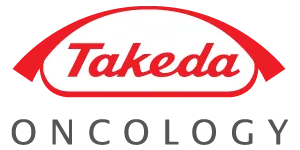 .
.  .
. 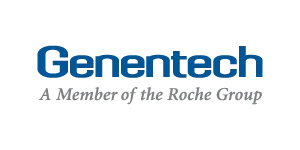
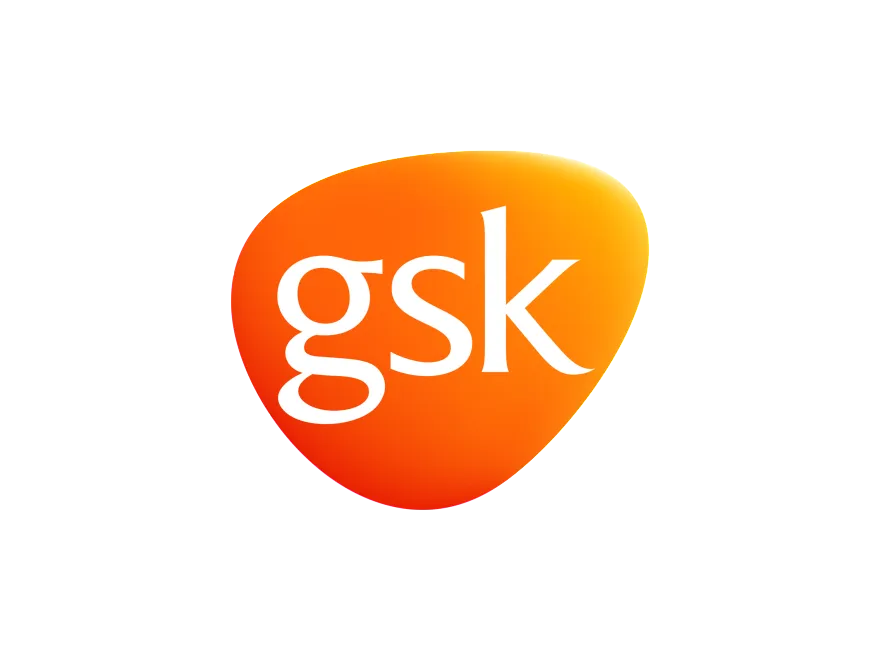
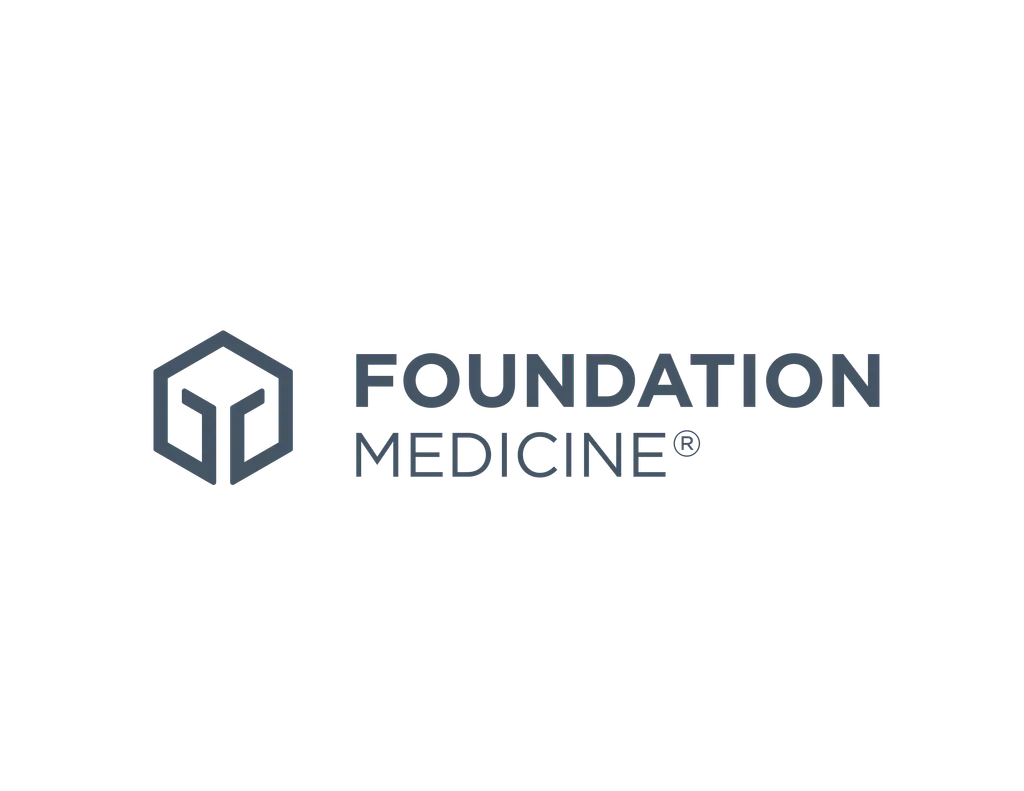

Autologous stem cell transplant (ASCT) is an essential part of many myeloma patients' treatment strategies. Among the first questions physicians answer in the early stages of a myeloma diagnosis is whether patients are transplant eligible or ineligible. Once considered controversial, ASCTs are now largely considered to be routine, safe, and essential to achieve deep remissions. Second and tandem transplants are more prevalent. Allogeneic transplants continue to be rare. In the age of novel therapies, many patients speculate if ASCTs are even needed, some still fear them. But the consensus of current practice still place transplant near the top of the list of effective treatments.
Drs. Natalie Callander, Mark Schroeder and Sergio Giralt address these and other issues concerning stem cell transplantation. Dr. Zachary Crees leads a discussion about two case studies and all our engage in answering questions from viewers of the first session of the Myeloma Crowd Round Table interactive webcast held on October 31, 2020:
Natalie Callander, MD, University of Wisconsin, Madison, WI: Why Consider Bone Marrow Transplant?
- Statistical evidence suggests the incidence of myeloma is increasing, with unexplained differences in different types of populations
- Autologous stem cell transplant (ASCT or auto) is a procedure using one’s own cells
- Allogeneic stem cell transplant (allo) using a donor’s cells are done infrequently in myeloma
- ASCT first was used because of lack of other treatments available
- Combining chemotherapy with ASCT was shown to give significantly better response rates in 1996 study, better quality of life after recovery
- More ASCTs are done in myeloma than in any other cancer type
- Transplant is never front line treatment
- Combination therapies have high response rate at front line
- Most ASCTs in US are done as an initial “package” of treatment
- Fitness matters more than age to determine ASCT eligibility
- Apheresis, the harvesting of stem cells, often takes place after two cycles of treatment; mobilization strategy to increase number of stem cells to harvest enough for at least two ASCT procedures
- Advantages of ASCT
- “One time” therapy, effective, repeatable, potential time off from drug therapy, low dose maintenance
- Disadvantages of ASCT
- Toxicity, hospital/clinic confinement, time needed to recover, potential long term side effects (rarer)
- Studies have shown ASCT plus other treatments control myeloma better and enhance survival
- Seems to be better minimal residual disease (MRD) results with transplant
- Tandem transplants
- Study showed a number of patients had a better response after second transplant, particularly those with high-risk disease
- Overall survival results still inclusive
- Maintenance seems to be helpful
- Long term data suggest allo has no survival advantage
- Largely a research question for clinical trials
- Will transplants become obsolete?
- Studies comparing long term carfizomib (Kyprolis ®)-based combinations vs. ASCT
- Those with transplant had better MRD responses with lower rates of early relapse
- Will transplants still be used in 20 years?
- Immunotherapies moved to front-line offer most promising possibilities
Mark Schroeder, MD, Siteman Cancer Center, Washington University, St. Louis, MO: The Process of ASCT
- The phases of myeloma therapy: induction, consolidation and maintenance
- Focus of this presentation is for patients who are transplant-eligible
- Induction: treatment to get control of the disease prior to thinking about high-dose chemotherapy and stem cell transplant
- Consolidation: response is assessed, decisions are made about whether or not to transplant and, if yes, the need for a second transplant
- Maintenance: using drug treatments to maximize response, usually less intense than initial treatment and consolidation
- ASCT procedure
- Goals are to maximize cytoreduction of tumor, rescue from high dose chemotherapy, reset immune response to cancer
- Collect enough stem cells to allow for adequate blood count recovery after chemotherapy
- Use of growth factors (G-CSF) to help body produce more blood cells
- Blood cells are collected by apheresis (can be stored for years)
- After cells are collected, a dose of chemotherapy is administered, typically melphalan
- One time infusion damages myeloma and blood-producing stem cells
- Typical side effect profile of ASCT
- Nausea, fatigue, diarrhea typically last 1-4 days
- Slight fever
- Once neutrophils recover, side effects lessen
- Why put patients through these toxicities?
- Study has found ASCT results in longer time until myeloma progresses, which is called progression-free survival (PFS)
- Management after ASCT depends on risk assessment, comparing response before and after ASCT
- Need for possible second transplant is assessed during consolidation
- High-risk patients who had ASCT and prolonged maintenance had longer PFS
- Both standard- and high-risk patients had longer PFS with extended lenalidomide maintenance
- Addition of proteasome inhibitors (PIs) also helps with PFS
- Monitoring and measuring effectiveness
- Regularly scheduled blood and urine tests, bone marrow biopsies, imaging are conducted [learn more about imaging here]
- Minimal residual disease testing (MRD) [learn more about MRD here]
- Response is measured by how much myeloma is reduced
Sergio Giralt, MD, Memorial Sloan-Kettering Cancer Center, New York, NY: Research Finding about Need and Effectiveness of ASCT
- Transplant is a choice, it is not a necessity, but for most myeloma patients, it may be the single most effective way to get long-term disease control
- Although no overall survival (OS) benefit has bee proven, patients with high-risk disease have significant OS benefits
- High-dose melphalan shows PFS benefit, patients have a deeper response as measured by MRD
- Study has shown that patients who chose not to have transplant after induction has a doubling of risk of relapse
- Will transplant become obsolete is a misleading question
- ASCT is not a treatment for myeloma, high dose melphalan is, ASCT can rescue bone marrow from its effects
- Melphalan can kill myeloma cells resistant to chemotherapy
- MRD-negative is not a surrogate for cure, but the less myeloma one has, the better it is
- Although aggregate numbers of ASCTs in myeloma have plateaued, likely because of the perception of benefit from novel drug combinations, only 50% of patients who “should” get ASCT actually do
- Significant discrepancy in Black myeloma community
- Pros of early transplant
- Youngest, healthiest you will be, myeloma will be less resistant, quickest return to “new normal”
- Pros of delaying transplant
- Conserve quality of life in early disease, minimize lifestyle disruption, hedge bets against future relapse
- Cons of early transplant
- 25% of patients may not need it, 20% relapse within 2 years, 1% risk of serious complications, takes three months to recover, no OS yet proven
- Cons of delaying transplant
- Two-thirds of patients will need it within two years, 20% of patients will become unable to have transplant because they become too sick or have not collected stem cells, recovery will be more difficult
- Supportive care and new research strategies
- Choose program carefully: outpatient or inpatient?
- Anticipate side effects to prevent and treat
- Most side effects happen when white blood cell count is zero, the cytokine interluken-6 (IL-6) is at its highest level then, perhaps blocking IL-6 will lessen side effects with use of siltuximab
- Acupuncture has been shown shown to reduce symptom burden
- Melphalan dosing depends on individual tolerability
- PK-directed melphalan helps determine optimal exposure
- The quicker the immune system recovers after transplant, the less likelihood of relapse
- Melflufen, a new melphalan-related drug has promising results
Zachary Crees, MD, Siteman Cancer Center, Washington University, St. Louis, MO: Discussion of Two Case Studies with Full Faculty
Case Study One
- 62 year old female with osteoporosis who had 5 months of back pain
- Initially sought care from chiropractor and then orthopedist who gave her steroid injections that provided no relief
- Primary care physician ordered MRI which showed compression fractures in the vertebrae, bone biopsy showed 60% plasma cells, following other tests, she was diagnosed with stage I myeloma, standard-risk
- Dr. Callander would choose VRd for induction, which is what patient received, achieving a partial remission (PR)
- Dr. Schroeder recommended to collect stem cells after 5 rounds of induction and moving on to stem cell transplant, patient did go on to get ASCT
- Dr. Giralt noted the standard of care in the US was lenalidomide/Revlimid ®-based maintenance until progression, if MRD- was achieved, an option would be to stop maintenance, but since she failed to achieve complete remission (CR), he would recommend len-based maintenance
- The patient was on a clinical trial comparing Rd to Dara-Rd followed by transplant and MRD assessment
- Dr. Crees asked faculty how they use MRD assessments to make treatment decisions
- Dr. Callander noted the MRD is still a research question
- Dr. Giralt agreed, but with one exception: for patients who have insignificant side effects with lenalidomide and want to come off maintenance, MRD- status helps inform decision, MRD+ patients would stay on maintenance
- Dr. Schroeder agreed MRD was a research question but would have encouraged any of his patients to enroll in this clinical trial
Case Study Two
- 62 year old male with hypertension, sleep apnea, treated thyroid cancer had symptoms of weakness and jaw numbness
- Patient had CT, then brain MRI which show marrow issues, had a bone marrow biopsy that determined “increased plasma cells”
- Was diagnosed with Stage III myeloma
- Induction of KRd was complicated by rash, switched to Kd with cyclophosphamide and continued to have persistent high-risk disease
- Dr. Callander noted many doctors would consider a CD 38 inhibitor a like daratumumab or isatuximab combination therapy with pomalidomide
- Dr. Giralt noted, with historical experience, the patient could have stem cells harvested, be treated with high dose melphalan, ASCT, and a maintenance trial for high-risk disease, but anti-CD 38 monoclonal antibodies are good option
- Dr. Schroeder, since this is a high-risk patient, using a CD 38 targeted agent prior to ASCT was a good option
- Patient was actually treated with Dara-Vd and continued to have persistent disease
- Patient was switched to DCEP (dexamethasone, cyclophosphamide, etoposide, cisplatin) and achieved partial response, before having ASCT which led to a very good partial response (VGPR)
- Maintenance was Dara-Pd and patient relapsed within six months of ASCT
- How would faculty manage this high-risk disease case further using International Staging System?
- Patient would qualify for a number of high-risk clinical trials and likely be offered an anti-BCMA CAR T cell therapy
- If patient were young and fit, he might qualify for an allogeneic SCT trial with BCMA-targeted strategy
- Clinical trials for antibody are also available
- If patient chose not to do trial, another option would be newly approved drug Blenrep ® [more information about this drug treatment can be found here]
Audience Questions & Answers
- 0:44 - What is the average remission time after ASCT?
- 2:59 - How long of a response is sufficient to consider a second transplant (unplanned and tandem)?
- 5:15 - When it the right time to collect stem cells?
- 7:51 - How much genetic profiling can or should be done to determine the impact of transplant or tandem transplant or other strategies?
- 11:29 - What comorbidities are of most concern to you when you think about ASCT?
- 15:46 - What is the percentage of benefit for a high-risk patient to do a single versus tandem ASCT?
- 19:10 - If initial induction (VRd) was not that successful (patient is now on daratumuab/DARZALEX ® and carfilzomib/Kyprolis ®), is that patient still eligible for ASCT? So one keep treating before going to ASCT?
- 22:30 - If transplant is being used to reduce tumor burden, and is not optimal effective, should patients consider following up with CAR T cell therapy?
- 25:56 - If someone is diagnosed early with no bone tumors and with amyloidosis, how do you treat amyloidosis with respect to stem cell transplant (for myeloma diagnosis)?
- 27:35 - (Re: a high-risk patient with t(4;14) in the UK) Should this kind of patient be thinking about a dual maintenance therapy, for example an IMiD plus proteasome inhibitor (PI)?
- 29:48 - If one does well on induction therapy and in remission, why should ASCT still be considered?
- 31:05 - VRd seems to be most commonly used in induction? When should one consider carfilzomib/Kyprolis ®? Are there genetic reasons for doing so?
- 33:05 - What factors to you consider to determine when to have a second transplant as compared to using other drug combination therapies?
- 33:55 - What is the recommendations on vaccines for childhood diseases, post-transplant?
- 35:28 - Does the information you are talking about also apply for plasma cell leukemia (PCL), primary or secondary?
- 38:23 - Is melflufen it designed to replace transplant?
- 39:50 - What are the considerations about transplant if one has extra medullary disease?
- 41:35 - A patient who is using valacyclovir post-transplant has been told by the physician that it can potentially affect renal function. How long should this and other supporting medications be taken post-transplant?
- 44:30 - How has COVID-19 affected your practice?
- 48:18 - Some treatments have the risk of secondary cancers, are there any increased risks in ASCT?
- 49:40 - In what context could a smoldering myeloma (SMM) patient consider an ASCT?
Questions Answered in Chat Forum
General
- My father was just diagnosed with multiple myeloma, so I’m not really sure what questions to ask. Anything would be helpful.
Dr. Crees answered: I am sure you have many questions. Consider scheduling a consultation with a myeloma specialist in your area. This will give you the best chance to have your questions answered in a way that is specific to your family member's case. [You can find a directory of myeloma specialists here.]
- Is stem cell transplant synonymous with bone marrow transplant? If not what are the differences?
Dr. Giralt answered: The blood stem cell lives in the marrow. When obtain it from the marrow we call it a bone marrow transplant. When we mobilize the stem cell from the marrow to the blood we call it a blood stem cell transplant.
- Will insurance cover the harvesting of stem cells for ASCT? [related question] Do Insurance companies accept this treatment for reimbursement. How expensive is it?
Dr. Giralt answered: Most insurance will cover it. [2nd question answer:] Most insurance and Medicare cover the expenses of transplant and other myeloma treatment, but out-of-pocket expenses vary.
- How is ultra high-risk disease defined as compared to high-risk disease?
Dr. Schroeder answered: In the slide I showed, high-risk meant one had one high risk feature and ultra high risk meant that one had two or more of the high-risk features. This is based primarily on genetic changes.
Dr. Crees answered: Two of the most commonly used risk scores are the revised international staging system (R-ISS) and a cytogenetics-based scoring system.
- What is the difference between refractory and relapsed disease?
Dr. Crees answered: Refractory disease means that a patient’s myeloma is not responding to treatment and they have not achieved a response. Relapsed disease means they initially did achieve a response but eventually the myeloma came back.
Candidate for Transplant?
- Can someone please clarify who is or isn’t a candidate for a stem cell transplant?
Dr. Crees answered: There are no absolute criteria that completely eliminate one’s eligibility for transplant. However, there are many factors that influence the risk of transplant. These factors need to be weighed against the benefit of transplant. A thorough discussion with your myeloma physician will help to clarify if transplant is right for you.
Preparing for Transplant
- Are you able to separate and remove stem cells from cancer cells when collecting them before transplanting them back these myeloma patients?
Dr. Giralt answered: Not at this time. The best way to collect a "clean" product is to get a very effective induction.
Dr. Crees answered: Some studies have looked at trying to “remove” contaminating myeloma cells from the transplant product but is doesn’t yet appear to have shown any significant differences in patients outcomes after transplant.
- Does anything happen to the stem cells harvested via apheresis to remove the cancer cells?
Dr. Crees answered: This is a great question. Several studies have evaluated the benefit in trying to remove meyloma cells from the stem cell product that is harvested. However, these studies have not shown a significant difference in outcomes, so it is not routinely done. Currently, the most effective way to reduce the number of contaminating myeloma cells in the product is to get the best response possible with induction therapy.
- Does depth of response post induction affect depth of response post ASCT, which in turn correlates with duration of remission? Therefore should a patient cycles of induction until they plateau?
Dr. Giralt answered: This is an important question. Most of us would recommend 4-6 cycles pre-transplant and tailor the post transplant treatment to the depth of response obtained.
- Dr. Schroeder mentioned that the tumor burden should constantly go down from the time of induction therapy to ASCT. What could it mean if this trend is not constant Does it have an effect on the transplantation?
Dr. Crees answered: It does occur that patients experience a rise in their M-protein during their treatment break between induction and proceeding to auto-transplant. The decision to proceed with auto-transplant vs to pursue alternative treatment regimens should be based on a conversation with your myeloma specialist.
- Can you highlight what alternative conditioning regimens are being studied to potentially replace high dose melphalan?
Dr. Giralt answered: A drug called melflufen and combinations of melphalan with busulphan.
- Is melphalan resistance a frequent occurrence in the stem cell transplant context? Is it known, or can it be known, in advance of transplant? Or is it only known after the fact, by lack of or limited response to transplant?
Dr. Crees answered: There are not any specific FDA approved tests that predict response to melphalan. However, patients with refractory disease to multiple induction regimens and who go into auto-transplant with active disease, there is an increased risk of relapse after transplant. This likely speaks to the aggressive nature of the individuals myeloma, rather than “melpahlan resistance” per se.
Post-Transplant
- How long after transplant, does one go back on meds to keep disease in remission?
Dr. Schroeder answered: Typically this therapy is started around 100 days after transplant.
- Can one’s type of myeloma or classification change after a transplant?
Dr. Crees answered: There is a growing appreciation for a concept called “clonal evolution” in myeloma cells as people go through various lines of treatment. It is thought that the myeloma can change over time with the selective pressure of different treatments.
- After transplant are patients more susceptible to catching viruses or other germs? If so, how long will they be more susceptible?
Dr. Crees answered: Yes, patients who have recently undergone ASCT are at increased risk for infections and should take precautions to reduce their risk of infection. Individual risks vary from patient to patient, and the exact timeline that one may be at high risk is variable and would be best discussed with the individual’s physician.
- Can stem cells be harvested after transplant?
Dr. Giralt answered: Yes.
- If a patient is MRD-negative after ASCT, why not collect stem cells for second transplant at that stage?
Dr. Crees answered: Currently, this is not clear. Data that suggests that lowering the amount of myeloma cells in the stem cell product actually leads to changes in outcomes after auto-transplant. Some studies have looked at ways to eliminate contaminating myeloma cells from the product, and have been very effective at eliminating the myloma cells, but these studies have not led to improved patient outcomes. It is likely that many patients with MRD-negativity after ASCT still have myeloma disease. We just can’t detect it.
- Can you provide an example between a good response, a complete response and a failure following a transplant.
Dr. Crees answered: We define partial response, very good partial response and complete response based on the International Myeloma Working Group response criteria.
- Can one it have light chains in the blood test three months after transplant and still have a successful result?
Dr. Crees answered: The presence of light chains may be due to many causes (only one of which could be myeloma). Discussion with your myeloma physician may help clarify if yours is due to myeloma, but even if it is, very effective treatments exist.
- What is the name of the drug you mentioned that can minimize side effects after a SCT, is it available in U.S. or Canada?
Dr. Giralt answered: Siltuximab is available but not approved for transplant.
Post-Transplant Vaccines and Immunity Issues
- Once one has had a transplant does does one lose immunity to prior diseases?
Dr. Giralt answered: We revaccinate patients regularly because we can’t guarantee that prior immunity is maintained.
- I am very concerned about whether I will need to be revaccinated.
Dr. Giralt answered: Most transplant centers would recommend you be revaccinated to make sure you don’t get hepatitis, measles, or tetanus.
- Virtually everybody will relapse at some time, Even if the M protein cannot be measured. That means either the tumor cells were reintroduced when you received your stem cells back or all the treatments did not succeed is killing of all tumor cells. Which one is the explanation?
Dr. Giralt answered: We generally don’t eliminate the last myeloma cell in the body and those myeloma cells learn how to escape your immune system.
Third Transplant?
- Would a third transplant some years after a tandem transplant be of any benefit? Or have third ones been found to be of little use?
Dr. Giralt answered: Yes, these have been performed and can be helpful.
- When would you recommend a third ASCT, to treat second relapse?
Dr. Crees answered: Fortunately, there are many treatment options for patients with multiple relapses. The discussion about when to pursue a third transplant compared to other treatment regimens including clinical trials is patient specific and should be based on a discussion with your physician.
- When might it be appropriate for a patient to receive a second ASCT after 5 or 10 years post ASCT? Assuming 3 or more relapses.
Dr. Crees answered: In patients who experienced benefit from their first auto-transplant and who relapse >18-24 months after their transplant, there is a reasonable chance they can benefit from a second transplant. Specific considerations really depend on what lines of therapy one has had, how long they benefitted from those other options, what options are left, what is the patient’s performance status, etc.
Allogeneic Transplants
- Are there any studies that demonstrate the effective a stem cell transplant from a healthy sibling or can the cells only be harvested from the patient?
Dr. Crees answered: Yes, studies have looked at transplants from siblings and unrelated donors (which we call allogeneic transplants). The risk of allo-transplant is higher than the risk fo autologus transplant, and therefore is not routinely used. Although there are some cases where an allo-transplant may be considered.
- If an allogenic transplant does not “cure” a patient, and hasn’t been shown to increase overall survival, why would it ever be done?
Dr. Crees answered: There are some patients in whom allo transplant can result in a prolonged disease free survival. In younger patients with high-risk disease and/or refractory disease, allo transplant may be considered.
- It was said that allogeinic transplants are considered experimental/trial therapies. What kind of data do you have on them and do you think it will become a standard treatment?
Dr. Crees answered: Allo transplants can be used outside of a clinical trial, however they are associated with increased risk. Therefore, they are typically only considered in specific scenarios.
Drug Treatments
- If one is allergic to lenalidomide, are there alternative drugs?
Dr. Giralt answered: Velcade ®, DARZALEX ® and many others.
- High dose chemo dose is shown in mg/m2. What is the m2, which appears to be an area rather than a volume?
Dr. Crees answered: Milligrams per meter squared.
Dr. Giralt answered: m2 is meter squared a measure of your body surface area.
- For a patient who was on Revlimid ® before transplant and who has had several side effects, it was decided not stay on it for maintenance and is now on Ninlaro ®. How does this compare for remission?
Dr. Crees answered: These are active areas of investigation, but it is likely that some form of maintenance therapy can still lead to improved disease control after transplant.
- What information can you share about medication induced rash?
Dr. Crees answered: Rash is an adverse effect seen with Revlimid ®. Patients may still be able to get other IMiDs.
- Can maintenance of 5 mg of Revlimid ® help diseasse progression if one has a white cell count problem?
Dr. Schroeder answered: Yes, dosing is patient specific depending on your side effects from the treatment.
Thanks to our Round Table sponsors
 .
.  .
. 
 .
. 
 .
.  .
. 




about the author
Greg Brozeit
Greg Brozeit has been with the HealthTree Foundation since 2015 when he began volunteering for the Myeloma Crowd. Prior to that he worked with Dr. Bart Barlogie and the International Myeloma Foundation, inaugurating many myeloma patient advocacy and education programs.
More on HealthTree Programs
Trending Articles




Get the Latest Multiple Myeloma Updates, Delivered to You.
By subscribing to the HealthTree newsletter, you'll receive the latest research, treatment updates, and expert insights to help you navigate your health.


